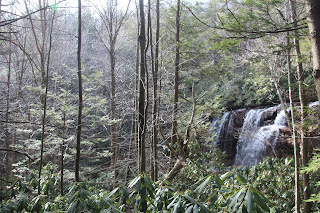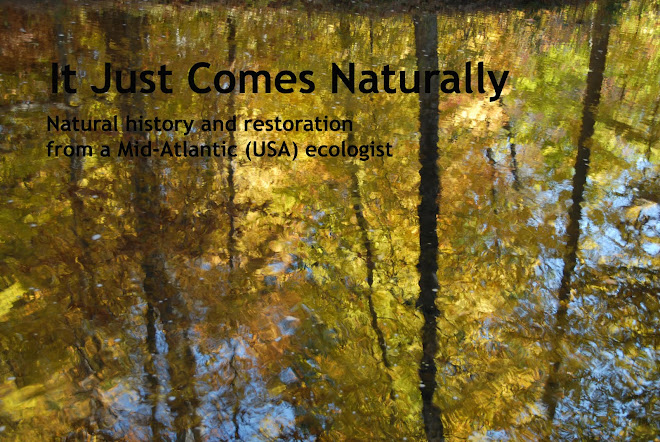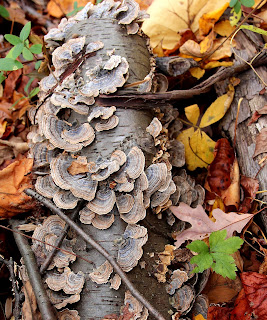 |
| On the brink |
Glen Onoko was a famous Victorian summer resort with a huge, rambling guest house perched on the bank of the Lehigh River at the mouth of little Glen Onoko Run. Radiating from the guest house were trails through the woods that allowed visitors from Philadelphia and New York (who arrived by train) to enjoy the magnificent scenery, including the cascades and rapids along the ravine. An elaborate stone stairway allowed guests to ascend 860 feet from the river to the top of the highest falls with relative ease.
The resort burned down (as did many wooden Victorian resorts) in the early 1900s and was never rebuilt.
I first came upon Glen Onoko in the early 1990s and have hiked there several times. When I "found" the ravine, it was pretty inaccessible. I had to drive up to the top of Broad Mountain, and then make my way on rough dirt fire trails to the top of the falls. From there, I could descend down the ravine and enjoy the serenity. During those early years, I don't think I ever encountered anyone else on my hikes.
Today, the Pennsylvania Bureau of State Parks has created a huge parking area at the mouth of the ravine (which also serves whitewater rafters on the Lehigh River in the summer). But the serenity of the hike is gone. Hordes of people ascend the trail every day, prominent rocks have been defaced by spraypainted graffiti, and discarded plastic water bottles are common in the undergrowth. Nevertheless, the hike is still scenic, and the waterfalls impressive.
The biggest problem for Kali was that the trail is extremely steep, rough, and difficult. Most of the original stone stairway has eroded away, so the "hike" is much more of a scramble up steep, sometimes slippery, rocks. I didn't have any problems, but Kali is probably the least sure-footed person I know, and the outing was torture for her. Ascending the ravine was tough enough, but descending was even harder. At one point, she broke into tears, and several other times fellow hikers helped me to get Kali through particularly difficult sections of trail.
 |
| Kali scrambling uphill |
One positive feature: Kali's very slow ascent and descent gave me plenty of time to take pictures.
 |
| Pennsylvania's tilted sedimentary rocks |
 |
| First falls |
 |
| Second (and highest) falls - about 60 feet |
 |
| Cairn cavern just uphill of second falls |
 |
| Visitors have created a wonderland of cairns in the rock overhang |
 |
| Third falls |
 |
| Approach to the fourth falls. The stone steps are a Victorian-era remnant |
 |
| Fourth falls through the rhododendron thicket |
 |
| Fourth (uppermost) falls |
 |
| Tree roots with moss and lichen garden |
 |
| Fern and moss rock garden |
 |
| Most intense color of the day |













